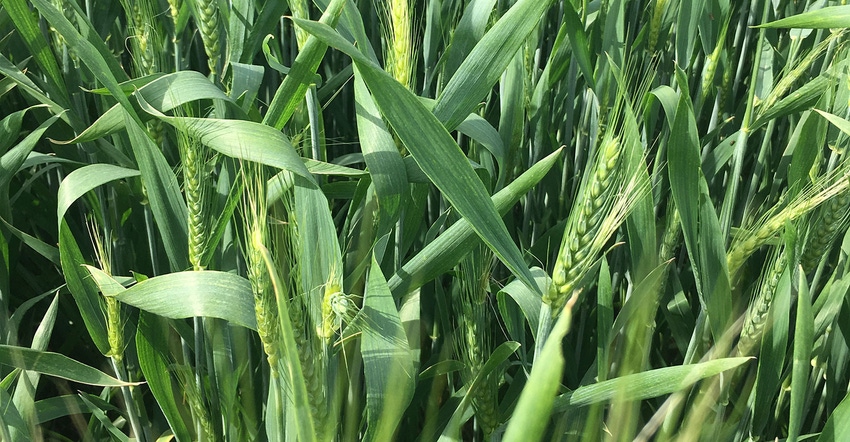March 25, 2019

Wheat producers may fare better than expected from the arctic blast that plunged temperatures into the mid- to upper 20s in early March and threatened the crop across Louisiana.
LSU AgCenter wheat specialist Boyd Padgett said the wheat crop may not have been hit as hard as anticipated in most areas.
“After speaking with others around the state, my gut feeling is we are in pretty good shape overall,” Padgett said.
Freeze injury to wheat varies widely, depending on growth stage at the time of the freeze. Based on recent observations, significant injury to wheat is likely to be low, particularly on later-maturing varieties, he said.
“Plants still in a vegetative growth stage where no heads are exposed can endure cooler temperatures,” Padgett said.
Early-maturing varieties that were at boot stage or starting to head out before the freeze were more susceptible to injury and took a bigger hit, he added.
Freeze injury in wheat is obvious seven to 10 days after a freeze occurs, so producers should know what damage was done to their crop.
Injury to wheat in the boot growth stage is evident by the head trapped in the boot and damage to the lower stem. If injury occurred when the wheat was heading, the heads and awns will be white, and lower stems could be damaged.
Acreage decline
Louisiana’s wheat acreage has continued to decline from as high as 300,000 acres a few years ago to an estimated 10,000 to 20,000 acres this year.
“Intentions were really high for wheat this year,” Padgett said, adding that a wet planting season prevented many growers from putting their crop in the ground.
Another challenge wheat producers face is Fusarium head blight, commonly referred to as scab, a disease that can cause significant yield loss and reduce grain quality.
“With the exception of last year, scab has been a problem over the past several years,” Padgett said.
Scab development is favored by wet, warm weather at flowering, and the fungus can survive over summer on corn, further aggravating control issues.
Wheat planted behind corn increases the risk to this disease.
“Hopefully, with the reduced wheat acreage, scab will become less of a problem,” he said.
“Oats are more susceptible to cold temperatures than wheat; however, freeze injury hasn’t been that severe in fields I have observed,” Padgett said.
Source: LSU AgCenter, which is solely responsible for the information provided and is wholly owned by the source. Informa Business Media and all its subsidiaries are not responsible for any of the content contained in this information asset.
About the Author(s)
You May Also Like




